Three years after café Waveon (2016) was built in Gijang Busan, a comparable café, Building B, was built in Buk-gu Ulsan. Hence in 2019, Waveon filed an architecture copyright infringement lawsuit, and on the 14th of September, the court issued the first instance verdict for the building’s demolition, stating that Building B infringed Waveon’s copyright in architecture. In the past, works of plagiarism across the arts such as books and phonograms were ordered to be destroyed, but this is the first case of a plagiarised building sentenced to demolition. What is the difference between infringement in other artistic fields and infringement in architecture, and what are the implications of this ruling? In this report, we look at the issue of copyright in architecture, focusing on the Waveon case, and interview Waveon’s architect, Kwak Heesoo (principal, IDMM Architects), to consider the challenges that remain to be addressed by the architectural community.
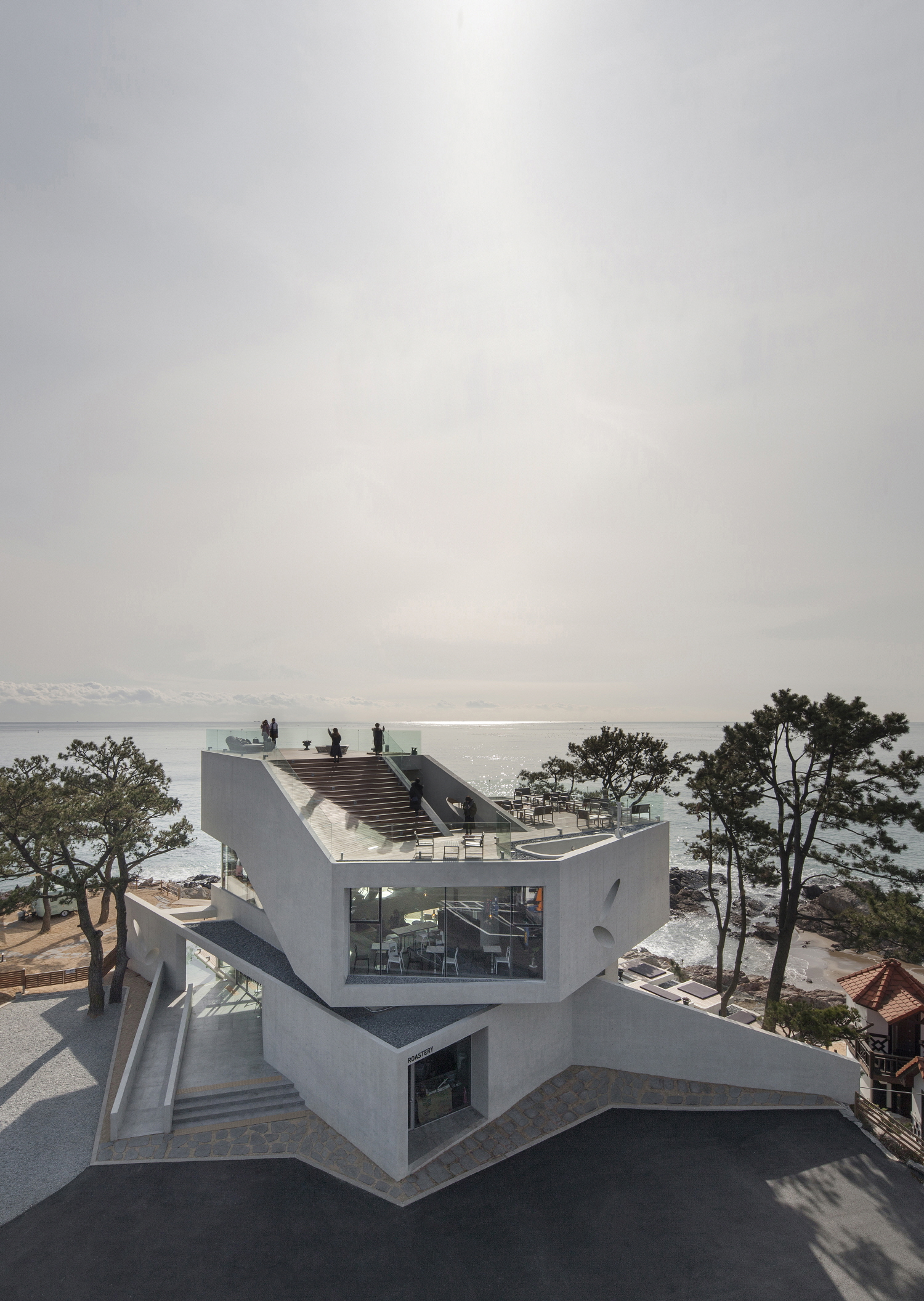
Exterior view of Waveon
Are the Criteria for Evaluating Copyrighted Architecture Sensitive to the Distinctive Nature of Architecture?
Can’t we consider an apartment to be protected by copyright? For the most part, no; however, some are, yes. In order for copyright infringement in architecture to be legally recognised, it is necessary to prove the creative identity of the original work, the substantial similarity between the elements of the creative identity of the original work and the work of comparison, and to ascertain that the creator of the work of comparison had knowledge of the original work prior to its creation. Here, creative identity is one of the most difficult things for lawyers to prove in the cases of architecture copyright infringement lawsuit. Legally, creative identity is defined as ‘the creator’s original expression of an idea or sentiment’, but in the case of apartments, the distance between buildings, building heights, floor area ratio, and construction methods are determined according to the regulations relating to protecting privacy and violation the right-to-have-sunlight, as well as the logic of capital. In the past, the courts have ruled in copyright infringement lawsuit in apartments that ‘only when the overall exterior displays the same creative identity, excluding the functional elements and individual components that comprise the building, can it be protected by the Copyright Act.’ As a result, it is difficult to recognise the creative identity of most apartments with similar designs. However, apartments are not the only buildings that are subject to legal regulations, economic pressures, and functional necessity. This raises the question of whether the criteria for determining a creative identity adequately reflects the unique properties and value of architecture.
In the case of the Waveon lawsuit, the creative identity was apparent, but all of the Class A parts that were ‘recognised as creative expressions’ were on the exterior, including the upper and lower masses that were visually separated by the façade, the lower masses where the street-side concrete wall enveloped around the sea-side glass wall, and the upper masses that were sculpted across a skewed pentagonal plan. In ALEFFEE (2021) and Le Detour (2020, covered in SPACE No. 645), Kwak Heesoo’s other café works, certain elements such as creating a low-stepped wooden bench on the inside and outside by employing the slope of the concrete masses are quantitatively analysed, along with the sloped design of the elevation, the wooden bench area on the roof, and the view direction of the layout: all were evaluated as Class B for their ‘contribution to creative identity’. The number of storeys (3F), the floor height (approximately 11m) and gross floor area (approximately 490㎡) were similar to Building B, but it was classified as Class C for ‘not contributing to creative expression’, and was not eligible for the similarity evaluation. In terms of the criteria for determining copyrighted architecture, Copyright in Architectural Design in a Nutshell (Architecture & Urban Research Institute, 2017) states that there are no objective indicators and that it depends on ‘similar precedents, submitted materials and the opinion of relevant experts’. However, there are far fewer precedents for copyright infringement in architecture than in works from other artistic or cultural realms such as music and film, and awareness of copyright in architecture among legal and artistic professionals is not high. ‘At that time, there were no lawyers with expertise on copyright in architecture, so we had to lead the case ourselves and explain to the lawyers why we thought it was plagiarism,’ says Yoo Ehwa (principal, ITM Yoo Ehwa Architects), who has filed three architecture copyright infringement lawsuit over the past eight years regarding Itami Jun’s Gyeongju Tower design proposal (2004). She also noted ‘When I was invited to the National Copyright Museum by the Ministry of Culture, Sports and Tourism, there was nothing in reference to architecture. With this opinion, now they are dealing with copyright in architecture.’ Some have concluded that, because architecture is between art and engineering, the Copyright Act is under the Ministry of Culture, Sports and Tourism, while the Building Act is under the Ministry of Land, Infrastructure and Transport, leaving copyright in architecture in a blind spot.
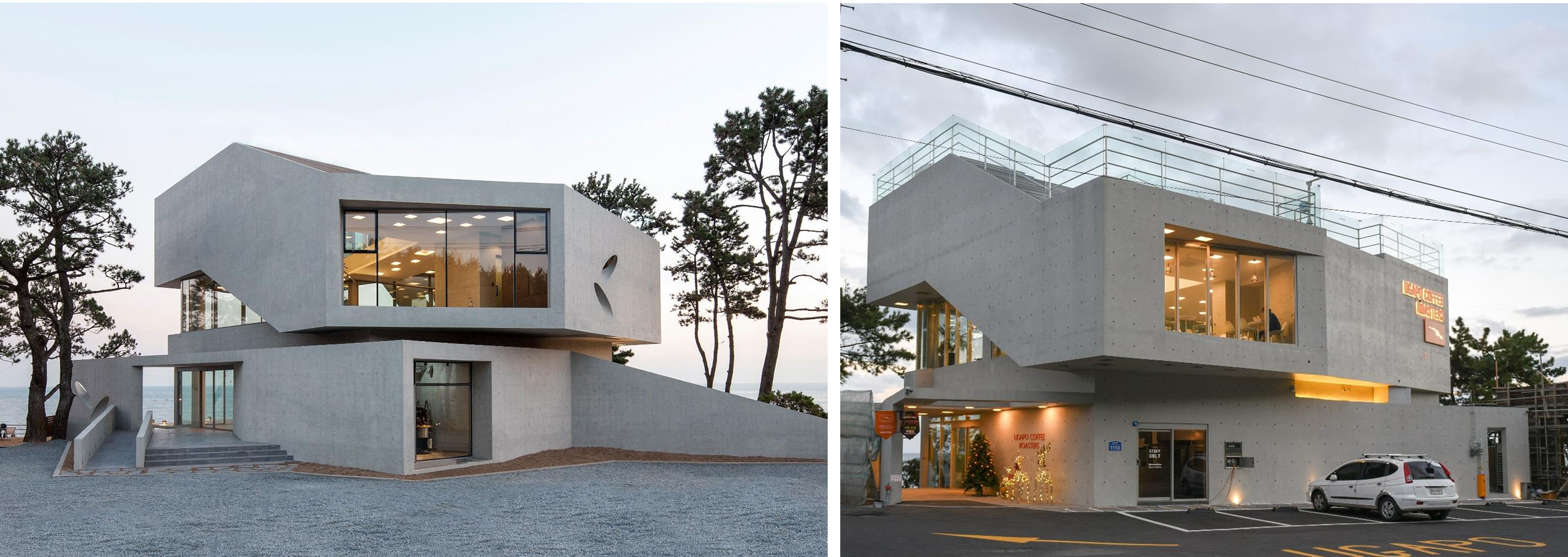
Exterior views of Waveon(left) and Building B(right) / Image courtesy of IDMM Architects
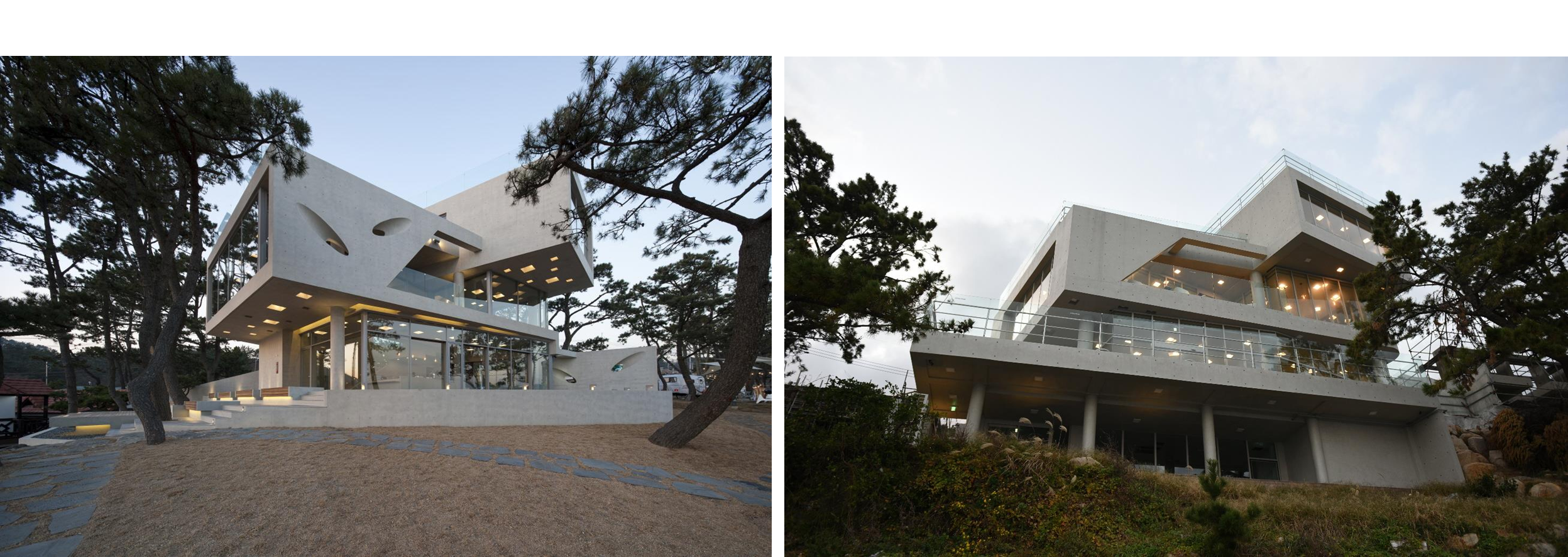
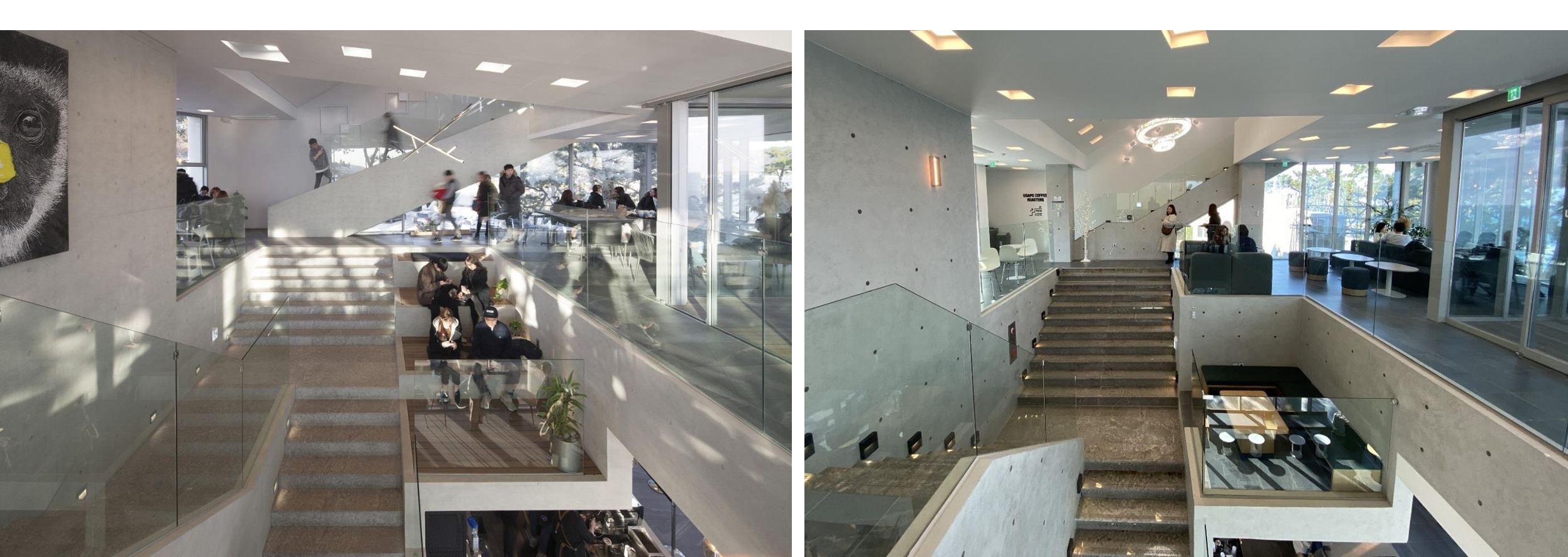
Interior views of Waveon(left) and Building B(right) / Image courtesy of IDMM Architects
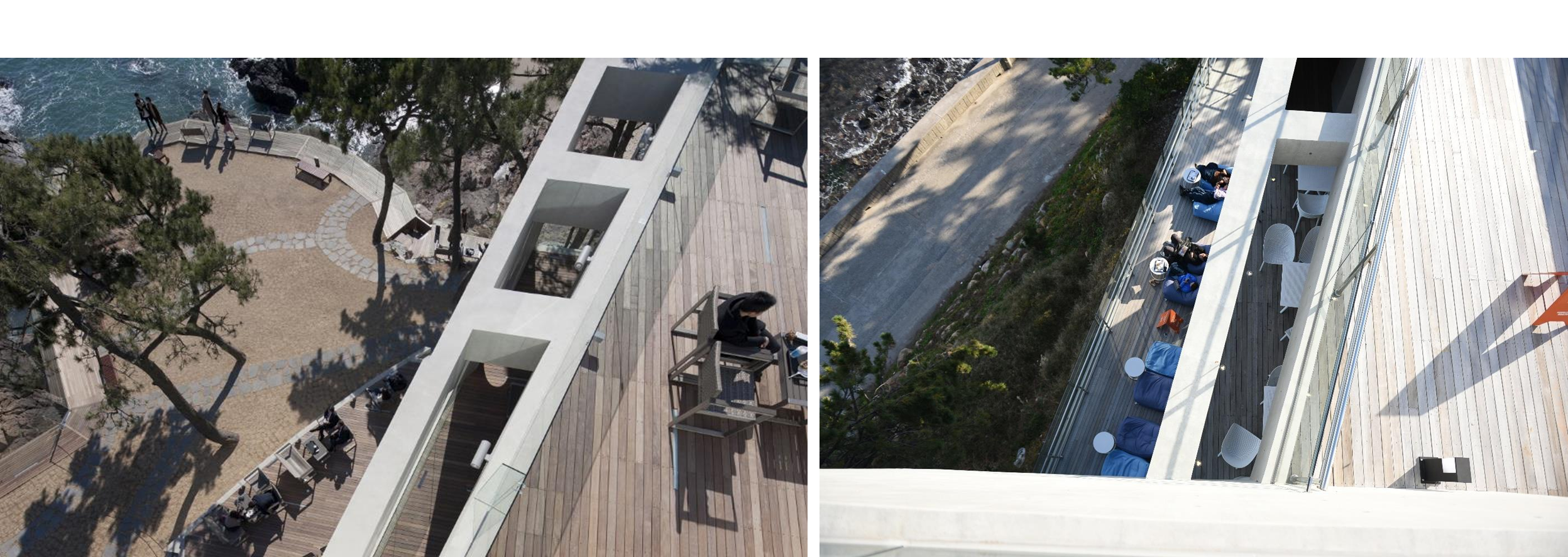
Roof areas of Waveon(left) and Building B(right) / Image courtesy of IDMM Architects
The Significance of a First Order to Demolish a Plagiarised Building
Copyright can be divided into the author’s moral right, which is a right related to securing the distinction of an individual design, and the author’s economic right, which is a right related to the preservation of the author’s financial gain. In the case of an architecture copyright infringement lawsuit arising from incorporating one copyrighted architecture into another building, compensation for damages has been claimed in the name of the right of paternity and the right of reproduction.
The demolition order was the result of a claim for the right of exhibition in line with author’s economic right. Since there have been few cases in which the right of exhibition has been claimed in architecture copyright infringement lawsuit, and since the Copyright Act does not clearly define what an exhibition is, interpreting the right of exhibition is somewhat ambiguous. The Waveon lawsuit set the first precedent by which a plagiarised building is to be demolished if it is exhibited in a city.
There have been voices in the architectural community that note it is important for architects to be aware of copyright, as the nature of the design industry, which relies on an architect’s capital, makes it difficult to refuse nreasonable requests. This ruling has made clients more aware of copyright issues by making them liable for plagiarism. However, the more significant point of this ruling is that, apart from the fact that clients will have to pay the price, copyright in architecture that were perceived as useless have been legally recognised as having a higher value than the construction costs of hundreds of millions of KRW.
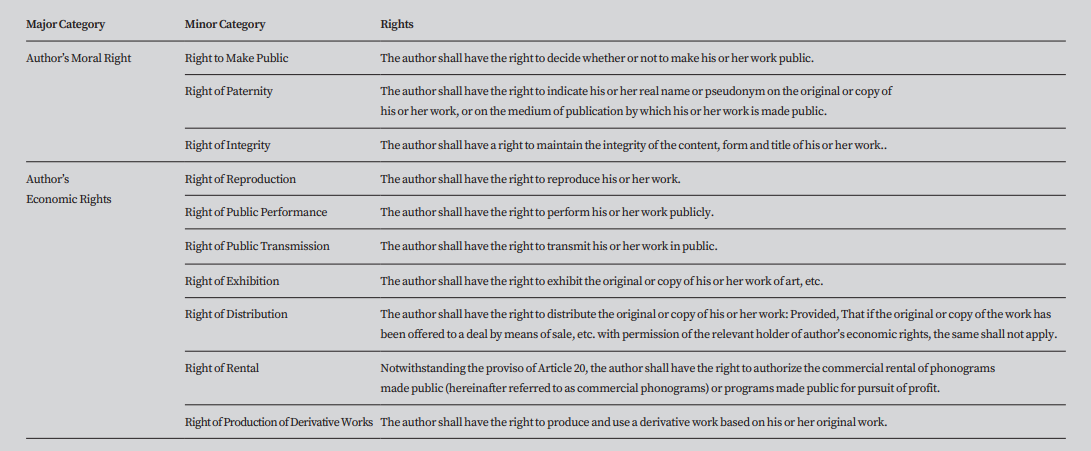
Details on the author’s moral rights and author’s economic rights under the Copyright Act
Interview: Points Where the Architectural Community Needs to Step In
Park Jiyoun (Park): Architecture copyright infringement lawsuits are sometimes settled by the parties due to procedural and psychological burdens. It must have taken great determination to file the lawsuit and insist on demolition.
Kwak Heesoo (Kwak): If architects do not set precedents themselves, they will be pushed outside the boundaries of the law and will not be able to claim the compensation they deserve. I thought that someone had to set an important precedent for copyright in architecture, so I had to go all the way to the first instance to make it possible. Settlements prior to the lawsuit were sometimes criticised for not setting a clear precedent.
This precedent, citing the demolition of a building, has improved the status of copyright in copyrighted architecture in the cultural and artistic community. Until now, architects have had an ambiguous position as creators, and architecture has been placed behind art in status, and it was the same with the Copyright Act. By setting a precedent that plagiarised building can be demolished to protect the right of the author, it has gained the same legal status as in other creative fields.
Park: Before filing the lawsuit, you sent letters of solidarity to the Korean Institute of Architects (KIA), Korea Institute of Registered Architects (KIRA), Korea Architects Institute (KAI), and Korean Institute of Female Architects (KIFA). What was the gist of the letter and what responses did you get?
Kwak: I sent a letter stating that Building B had plagiarised Waveon. If plagiarism and theft in the architectural community are tolerated by the silence of the majority or limited to the issue of individual architects, the unique ideas and creative ambition of architects as a collective will be clouded by unregulated practices. I asked institutions to confirm the fact of plagiarism and to take action against Building B. However, there was no investigation or response. After waiting for over a month with no response, I went to court and began a four-year legal battle. Even after the original verdict, no such institution approached me to address the issue collectively. Rather, architects have contacted me about their own plagiarism disputes, which is perhaps a testament to the lack of institutional response to plagiarism. It is extremely inefficient for individual creators to have to worry about protecting their work in addition to creating it. Wouldn’t it be better for an organisation representing the architectural community to steadily build up know-how and solve the problem with a system? Improvements are needed at an institutional level, such as reviewing issues related to plagiarism and providing legal advice.
Park: During the lawsuit, what were the most significant things that you felt needed to be performed by the architectural community?
Kwak: It took four years to reach the original verdict, with appeals on both sides, and even before we received any compensation, we had to pay our lawyers contingency fees and legal fees. Lawsuits are very expensive and time-consuming processes, so it’s important to prevent plagiarism from happening in the first place. While the Architects’ Code of Ethics states that ‘Architects shall [...] respect the work and intellectual property of fellow architects,’ it is necessary to prevent plagiarism not only at the code level, but also when informed by detailed codes of conduct and a response manual so as to act quickly when plagiarism is identified. An archive of plagiarism cases would be a valuable reference in the event of lawsuits.
Park: In order for architectural plagiarism to be recognised, it is necessary to prove the creative identity of the original work, the substantial similarity between the two works, and the reliance. Have there been any difficulties in proving this, or are there areas that require institutional improvement?
Kwak: It is not easy to prove the creative identity of architecture because there are functional elements such as floors, walls, and roofs that are necessary. Defendants often provide examples of partially similar buildings to refute the creative nature of the original work. The court requires the Korea Copyright Commission to determine the creative identity, but the scope of evidence is narrow because it is measured quantitatively, such as the massing of the first and second floors being offset. Design is the result of a highly complex qualitative process. The client invests one’s assets and pursues personal profits, but the architect must respond to social demands and play a role in mediating between the competing demands of the individual and society, as well as producing architecture through an immediate decision-making process and reaction while facing numerous workers at the construction site. On the other hand, the so-called plagiarised works completely omit such processes, leaving only the results. The creative nature, however, is judged by the result itself, and similarity is judged by the one-to-one correspondence of building to building. Aside from being legally effective, if the architectural community were to create its own criteria for judging creative nature, it would be possible to broaden the scope of evidence by identifying architectural vocabulary from the architect’s previous references to prove creative nature.
Park: This is the first case in which a building has been ordered to be demolished in an architecture copyright infringement lawsuit. How do you think this precedent will affect the architectural community in the future?
Kwak: In the past, there have been cases where demolition was claimed in the name of the right of exhibition, but the court did not order demolition because of the cost to local society. When faced with the actual demolition of a building, the stakes are high enough to warrant a lawsuit between the client and the architect of the plagiarised building. While this is unfortunate on a personal level, we will continue to advocate for its demolition for the greater good. This precedent could be a shield for architects: if a client asks for a design that looks like a certain building, architects can now say, ‘If we plagiarise, it will be demolished.’ Since the original verdict, there has been much debate about whether demolition is necessary and whether Building B is the only example of architectural plagiarism. A foreign architect emailed us about the work of a Korean architect whom the foreign architect suspected of plagiarising his work. The reported Korean architect is a well-known architect in the architectural community, and fundamentally, the original author cannot but know whether the work is plagiarised or not. It is embarrassing. Disrespect for the work of other creators is rampant in the architectural community. There is terminology that need to be clarified, such as an imitation, an homage, and a plagiarism, but we hope that this ruling will bring the issue of copyright in architecture back to the forefront of the debate, and that architects will once again establish their own awareness of copyright.
Park: After four years of pursuing this lawsuit, the first instance was completed, but the case is now faced with an appeal. What will be the main points of contention in the appeal?
Kwak: In the first instance, we argued for the right of reproduction, the right of paternity, and the right of exhibition. For the right of reproduction, we claimed the design fee of 132 million KRW, which is the amount we could have received if we had designed it; for the right of paternity, 50 million KRW; and for the right of exhibition, we claimed demolition. However, the court awarded 45 million KRW, 5 million KRW, and complete demolition, respectively. Here, the amount of compensation for the right of reproduction was calculated by dividing the sum of our design fee and the defendant’s design fee by two. We cannot understand the logic of this estimation, and this part should also have a criterion, so we will argue that in the appeal.
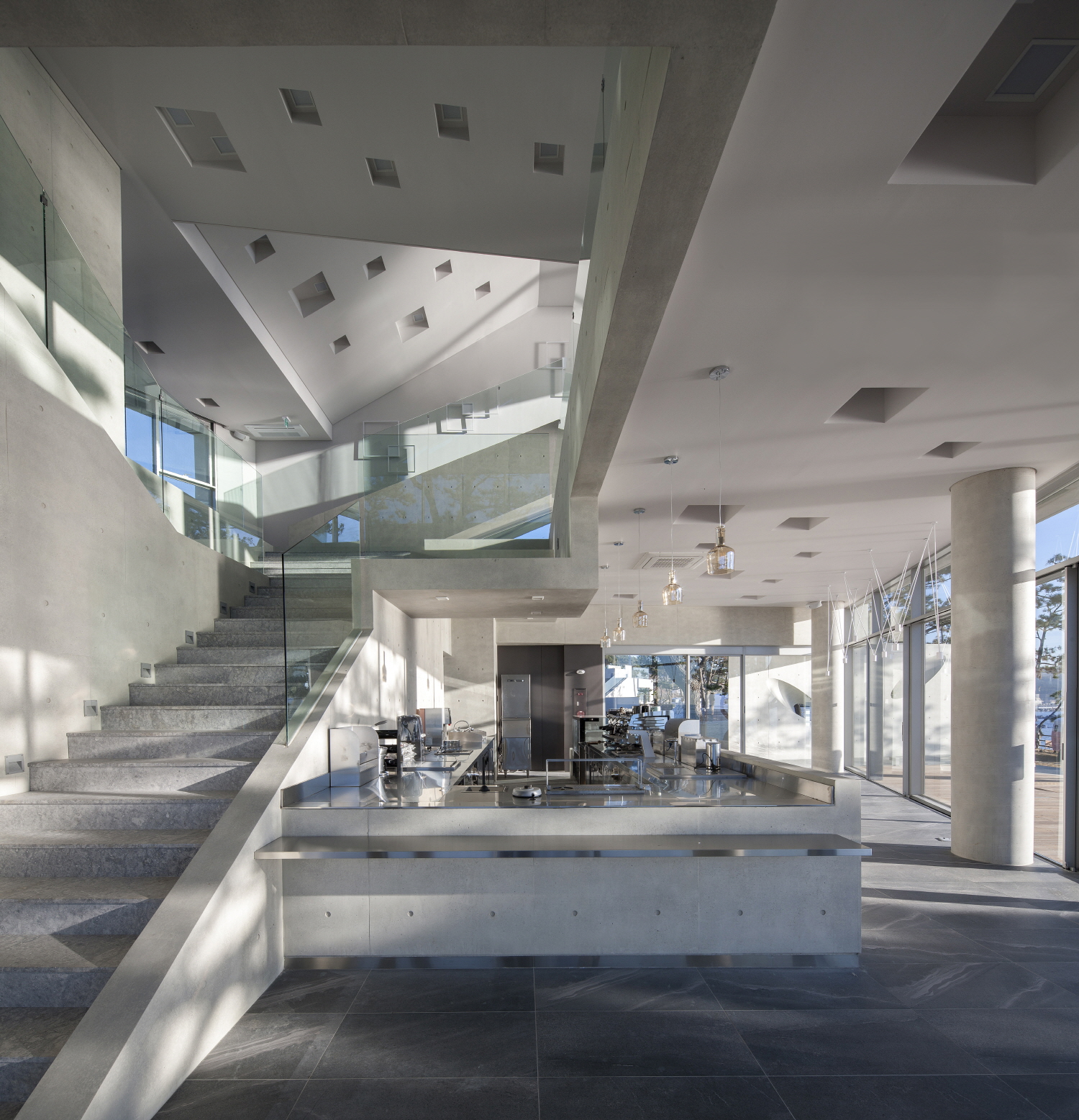
Interior view of Waveon





